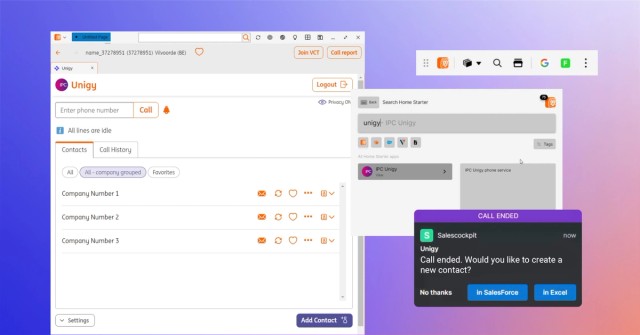February 7, 2024
Technology Framework for Operational Resilience: A Strategic Imperative for Asset Managers

In the rapidly evolving landscape of financial services, Operational Resilience has transcended buzzword status to become a cornerstone of organizational strategy, especially for asset managers. 2024 may very well be the era of intensified regulatory scrutiny, with an emphasis on the resilience of technological frameworks. As regulations such as the Digital Operational Resilience Act (DORA) come into sharper focus, asset managers must pivot from a traditional approach to an innovative, technology-driven model that not only complies with stringent regulations but also fuels growth and innovation.
The Imperative for a Robust Technology Framework
Asset managers have long been attuned to the imperatives of Operational Resilience, especially with regulations introduced over recent years. However, the evolving regulatory landscape necessitates a deeper integration of technology into the operational fabric of asset management firms. It's not just about adopting technology; it's about weaving it into the very DNA of organizational processes and workflows. Cloud solutions, while crucial, represent just a segment of the technology stack that firms need to address. A comprehensive desktop framework is equally pivotal, serving as the connective tissue in the management of internal and external applications.
Elevating Operational Resilience through Technology
The journey toward Operational Resilience is not a one-time endeavour but a continuous process, demanding an operating model that's both agile and robust. A best-practice operating model is underpinned by:
Observability: Understanding the deployment, usage, and workflow integration of applications, coupled with stringent access controls.
Holistic Reporting: Offering a panoramic view of the desktop environment, transcending the limitations of isolated app-based reporting.
Proactive Maintenance & Incident Response: Enabling real-time application modifications, thereby curtailing the delays traditionally associated with packaging and deployment.
Instant Deployment: Facilitating the immediate delivery of new applications to end-users, enhancing responsiveness and agility.
Enhanced Visibility: Ensuring that end-users have seamless access to and discovery of the applications at their disposal.
The Cornerstone of a Best Practice Operating Model: Security
In the quest for Operational Resilience, security is non-negotiable. A best-practice operating model recognizes that while individual applications may be secure, the platforms they reside on could be a repository of vulnerabilities. The paradigm is shifting, with an increasing focus on not just the security of the applications but also the containers that host them. With nearly 1000 (916 to be precise) Chromium priority vulnerabilities identified in 2023, maintaining proprietary containers is not only costly but introduces unnecessary risks.
Additionally, the role of browsers, often the default channel for app deployment, demands a reevaluation. Their propensity to allow unrestricted web access alongside business-critical applications poses a latent risk, underscoring the need for a controlled browsing environment.
Operational Resilience as a Catalyst for Innovation
Operational Resilience, when underpinned by a robust technology framework, transcends its traditional role. It becomes a conduit for innovation, fostering an environment where internal developments, data analytics, AI, and third-party solutions come together to drive growth and transformation.
OpenFin: Orchestrating the Symphony of Operational Resilience
OpenFin emerges as a tailored solution, perfectly aligned with the strategic imperatives of asset managers:
- Browser: A core component of Workspace, OpenFin’s Browser is engineered for enterprise use, offering a secure and controlled environment for corporate app deployment.
- App Deployment: OpenFin streamlines the deployment of internal and third-party apps, maintaining the agility of web-app updates and access controls.
- Analytics: A comprehensive suite offering insights into app usage, user activity, and workflows, enabling data-driven decision-making.
- App Discovery: A streamlined mechanism to explore, dock, and store corporate applications and data, enhancing operational efficiency.
- Workflow Productivity: OpenFin mitigates the friction of application toggle, data rekeying, and information retrieval, facilitating seamless workflows and enhancing productivity.
Navigating the Regulatory Landscape
In the backdrop of evolving global regulations like the EU's DORA, the FSB’s consultation on third-party risk management, and the UK's Operational Resilience rules, asset managers are compelled to adopt a forward-thinking approach. Operational Resilience is not just about compliance; it's about embracing technology as a strategic ally, one that propels firms towards growth, innovation, and enduring resilience.
OpenFin stands at the forefront of this transformation, offering asset managers the tools and technology to not just navigate but thrive in the new era of Operational Resilience and innovation.
Relevant Regulations
- Financial Stability Board (FSB) consultation on
enhancing third-party risk management and oversight
(22 June 2023 FSB Consultation) - The EU Digital Operational Resilience Act (DORA)
- DORA Draft Regulatory Technical Standard on ICT
risk management tools (DORA ICT RMF) - UK BoE, FCA & PRA Discussion Paper ‘Operational resilience:
critical third parties to the finance sector’ (UK DP3/22)
Enjoyed this post? Share it!
Related Posts
All Posts ->
Featured
Enhanced Deployment Flexibility with OpenFin's Fallback Manifests
Thought Leadership

Featured
ING Integrates OpenFin for Salesforce to Optimize Workflows
Thought Leadership